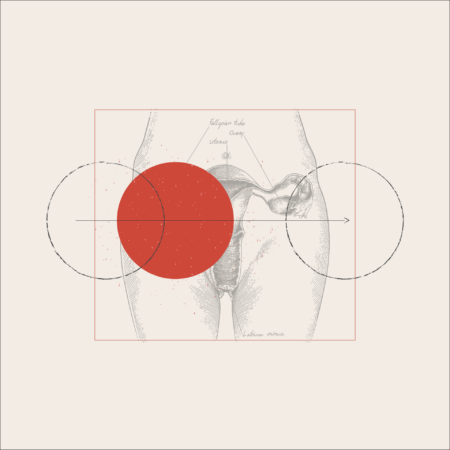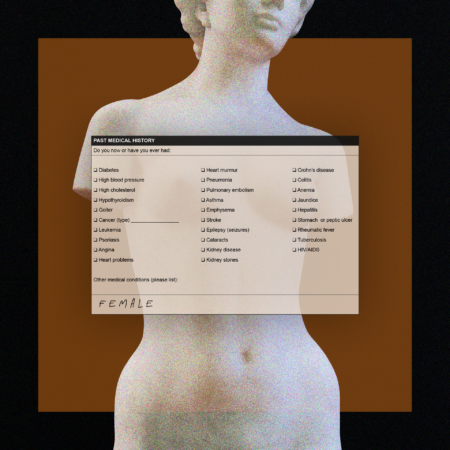Human eggs, grown from stem cells in a dish. A plastic bag that acts as an artificial womb. A drug that stops ovarian aging. While none of these inventions are currently in the doctor’s office, in laboratories around the world, female scientists are working to bring them to fruition and yielding valuable insights about human reproduction in the process.
For something that has been happening for millennia, we know surprisingly little about reproduction. Of course, the basic mechanics are familiar enough: sperm meets egg, sperm fertilizes egg, embryo implants in the uterus, and roughly nine months later, a baby emerges. In the late 1970s, Cambridge scientists developed the first successful in vitro fertilization (IVF) procedure, in which the first two steps could take place outside of the human body, in vitro, or in glass, before the embryo was transferred back into the uterus. Since then, an estimated 8 million children have been born through IVF. But in the intervening decades, there have been few truly revolutionary advances in reproductive technologies, and many of the intricacies of pregnancy are still poorly understood. This is despite the fact that as people have children later, the infertility sector is expected to be worth over $15 billion by 2023, according to an estimate by the investment bank Piper Sandler. Even fundamental questions about the female reproductive system remain unanswered. For example, the average woman is born with over one million egg cells. During each menstrual cycle between puberty and menopause, one of these egg cells will mature and either fertilize or exit the body. But that’s only a few hundred of those cells—why do the rest of them die off? And how does that relate to aging and a woman’s ability to become pregnant?
“Even in healthy females, a long-standing mystery in ovarian biology is that we are only able to use less than 0.01 percent of the oocytes throughout a reproductive life-span,” says Dr. Lei Lei, an ovarian biologist and associate professor of the Center for Female Reproductive Longevity and Equality at the Buck Institute, an anti-aging research center in California. “The vast majority of the oocytes in the ovarian reserve simply undergo cell death without being activated and used.”
We want to understand how the oocytes in the ovarian reserve make the decision to remain dormant, grow into mature eggs or undergo cell death.
Lei and her colleagues are currently working on answering basic questions about ovarian function; it will likely be years before their research yields clinical applications, but the questions they are asking will help bring about a better understanding of both fertility and the overall female aging process. “We want to understand how the oocytes in the ovarian reserve make the decision to remain dormant, grow into mature eggs or undergo cell death,” said Lei. “We believe the answers to this question is the foundation for the medical solutions for preserving ovarian reserve and thus ovarian function.” She envisions some sort of drug, perhaps, that could help maintain optimal ovarian health, and likely support better overall health in women. It would also be especially useful for people facing premature ovarian insufficiency, when the egg reserve dwindles far in advance of what might be expected at a given age (female fertility declines with age, with a steeper fall in egg quality and quantity beginning around age 35) or cancer patients whose treatment can affect their ovarian function.
Halfway around the world, in her lab at the University of Edinburgh, Professor Evelyn Telfer and her colleagues are asking different and equally important questions about the human egg. The work revolves around developing eggs in vitro from other cells in the body, which could ultimately mean a new source of healthy eggs for women who no longer produce their own. These eggs could theoretically be grown from their earliest stages, all the way to maturity (the point at which, in the human body, it would be released from the ovary) and fertilized. In the lab, they begin with either stem cells or ovarian cells, and culture them in a medium enriched with substances, called factors, that encourage the eggs’ growth by facilitating communication between the egg and its environment. “Our main hypothesis is that it’s the quality of the connections between the egg and its surrounding cells” that leads to a healthy, good quality egg, Telfer said. “If we can create conditions that support those communication networks, then we have a better chance of getting higher quality eggs.”
Understanding the process of meiosis—the cell division that creates sperm or eggs, which have half the number of chromosomes as a normal cell—and the growth and development of an egg could then improve outcomes for the procedures already available to people, such as IVF or egg freezing. “What makes an egg a good egg? What potentially makes it a bad egg?” Telfer, who is Chair of Reproductive Biology at the university’s Institute of Cell Biology, asks. “We see this as integral to all of these assisted reproductive technologies.”

In 2018, Telfer and co-authors reported that they had, for the first time, successfully grown human oocytes in vitro (previously, this had only been done with mice.) This year, she and a team at Leeds University hope to grow sheep oocytes in vitro, then attempt to fertilize them and see if this yields actual healthy sheep. “The question is, will we get normal offspring? Now, obviously, that’s not really a project that we could do in humans,” she said. “But we hope to get this proof of concept, using the sheep model.”
It was a tiny lamb that caught the attention of journalist and filmmaker Jenny Kleeman, whose book Sex Robots and Vegan Meat explores how technology is transforming the fundamental experiences of being human: sex, eating, birth, and death. After seeing images of “lambs in bags,” as she put it, on the website of The Guardian newspaper, she dove into the world of ectogenesis, or the use of artificial wombs to gestate mammals outside of the body.
Of the different teams of researchers working on this technology, the Children’s Hospital of Philadelphia, led by Dr. Emily Partridge, is perhaps the farthest along in its development; it is currently seeking approval for its “biobag” from the U.S. Food and Drug Administration. It is designed to gestate babies who would otherwise be extremely prematurely born, at the cusp of viability, which is currently around 23 to 24 weeks’ gestation. Instead of whisking them off to incubators in an intensive care unit, these fetuses would continue to grow in a temperature-controlled plastic bag filled with lab-made amniotic fluid, with a circulatory system in place of a placenta, as if in utero, until they reached full term.
Even though they are developing these artificial wombs with “the most noble of intentions,” Kleeman says—saving vulnerable premature babies—it is hard to tell what the knock-on effects of such technologies will be. In theory, moving reproduction completely into the lab—from creating embryos with stem cells to gestating them in a biobag—could mean total reproductive parity. Queer and single people could have children with ease, infertility would be a thing of the past, people who take medications wouldn’t have to pause their treatment during pregnancy. But, she notes, artificial wombs and other technologies will land in a world already distorted by gender inequality. And, she points out, many of the leading scientists in artificial womb research are men, who may not have fully thought through the consequences of severing reproduction from the female body.
If gestation no longer has to happen inside the body, what happens to the right to choose an abortion?
“This is about the difference between an ideal world, where this technology is used in that medical sense, and the real world in which we currently live, where we fetishize pregnancy and birth, and where a lot of women’s reproductive rights have a basis on when babies can survive outside the womb, and the right to choose what happens to your body.” Kleeman raises a number of questions about how this might unfold. If gestation no longer has to happen inside the body, what happens to the right to choose an abortion? If wealthy people can have children without disrupting their careers or endangering their bodies, will natural pregnancy become a marker of poverty, a sign that one couldn’t afford to spring for the biobag?
Kleeman understands why many people might want to skip the experience of pregnancy. Not only is it draining and potentially life-threatening, but as a social fact, it can be debilitating to one’s career and esteem. Maternal discrimination and pregnancy discrimination are features, not bugs, of the labor market; Kleeman herself saw work opportunities dry up when she was pregnant. For women to take full advantage of these technologies, she said, we should start with dismantling discrimination on the basis of their reproductive capacity. “I think what would be beneficial for women is if we design a world that accommodates the fact that women are pregnant and give birth,” she says.
Anna Louie Sussman is a New York-based journalist with extensive experience reporting on gender, economics, health, and reproduction. She is currently at work on the book “Inconceivable: Reproduction in an Age of Uncertainty,” which looks at the challenges people face in starting and growing their families. It builds off her New York Times Sunday Review cover story, “The End of Babies.”





